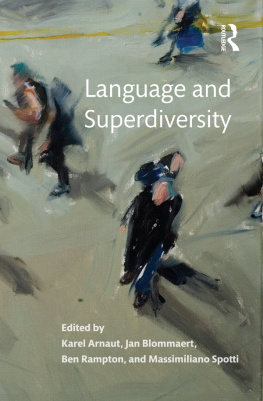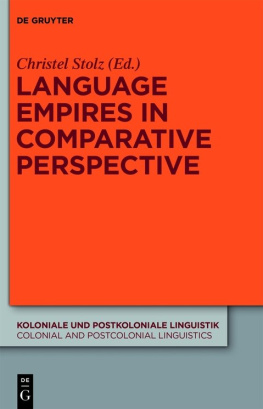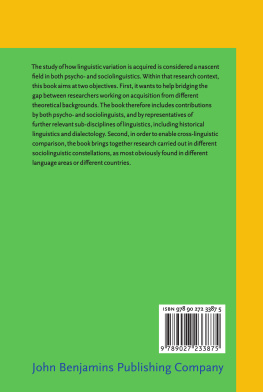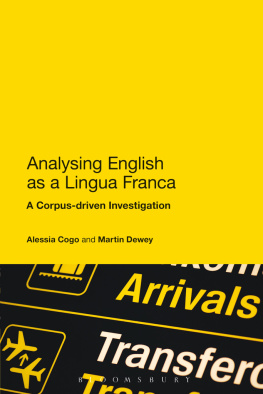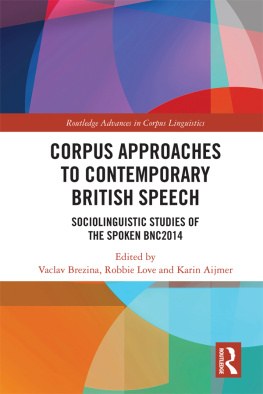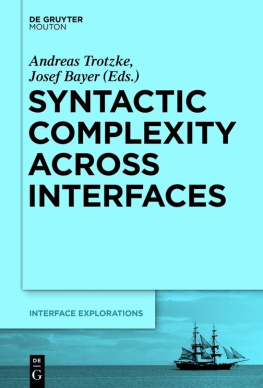First published 2016
by Routledge
711 Third Avenue, New York, NY 10017
and by Routledge
2 Park Square, Milton Park, Abingdon, Oxon OX14 4RN
Routledge is an imprint of the Taylor & Francis Group, an informa business
2016 Taylor & Francis
The right of the editors to be identified as the authors of the editorial material, and of the authors for their individual chapters, has been asserted in accordance with sections 77 and 78 of the Copyright, Designs and Patents Act 1988.
All rights reserved. No part of this book may be reprinted or reproduced or utilized in any form or by any electronic, mechanical, or other means, now known or hereafter invented, including photocopying and recording, or in any information storage or retrieval system, without permission in writing from the publishers.
Trademark notice: Product or corporate names may be trademarks or registered trademarks, and are used only for identification and explanation without intent to infringe.
Library of Congress Cataloging in Publication Data
Arnaut, Karel, editor. | Blommaert, Jan, editor. | Rampton, Ben, 1953
editor. | Spotti, Massimiliano, 1974 editor.
Title: Language and superdiversity / edited by Karel Arnaut, Jan Blommaert,
Ben Rampton, Massimiliano Spotti.
Description: New York ; London : Routledge, [2016] | Includes bibliographical
references and index.
Identifiers: LCCN 2015012481| ISBN 9781138844575 (hardback : alk. paper) |
ISBN 9781138844582 (pbk. : alk. paper)
Subjects: LCSH: MultilingualismSocial aspects. | Languages in contact. |
Language and languagesVariation. | Sociolinguistics.
Classification: LCC P115.45 .L36 2016 | DDC 306.44dc23
LC record available at http://lccn.loc.gov/2015012481
ISBN: 978-1-138-84457-5 (hbk)
ISBN: 978-1-138-84458-2 (pbk)
ISBN: 978-1-315-73024-0 (ebk)
Typeset in Bembo and Stone Sans
by Florence Production Ltd, Stoodleigh, Devon, UK

Contents
Karel Arnaut, Jan Blommaert, Ben Rampton, and Massimiliano Spotti
Jan Blommaert and Ben Rampton
Karel Arnaut
David Parkin
Ben Rampton
Sirpa Leppnen and Ari Elo
Jens Normann Jrgensen, Martha Sif Karrebk, Lian Malai Madsen, and Janus Spindler Mller
Adrian Blackledge and Angela Creese
Jie Dong
Jan Blommaert and Ico Maly
Piia Varis and Xuan Wang
Celia Roberts
Massimiliano Spotti
The intellectual genesis of this book is described in the introductory chapter, and we can be brief here. The book is a truly collective achievement, the foundations of which are open dialogue and mutual generosity; all InCoLaS members deserve accolades for that. This congenial atmosphere was greatly stimulated by our dear friend and colleague the late Jens Normann Jrgensen, whose untimely death we still mourn. This book, to which he contributed so much, is dedicated to him.
At various points in our history as a group, we benefited hugely from the constructive input of Steve Vertovec, Rob Moore, Ccile Vigouroux, Asif Agha, Michael Silverstein, Christopher Stroud, Susan Gal, Marco Jacquemet, Charles Briggs, and many of the doctoral students who have attended InCoLaS meetings. We hope they will recognize their voices in parts of the book.
Editorially, pulling this book together was very far from straightforward, and the point is simply that without Karin Berkhout of the Department of Culture Studies, Tilburg University, this book would never have materialized. Karin deserves more than just a routine expression of gratitude here the title of executive editor of this volume is appropriate.
We are grateful to Naomi Silverman of Routledge US for her enthusiasm about this project, and for her infinite patience and tolerance while we struggled to make this book.
7
Polylanguaging in Superdiversity
Jens Normann Jrgensen, Martha Sif Karrebk, Lian Malai Madsen, and Janus Spindler Mller
Introduction
Human beings use language to achieve their goals, and with a few exceptions by using language to other human beings. It is a widely held view that language as a human phenomenon can be separated into different languages, such as Russian, Latin, and Greenlandic. This chapter is based on the recently developed sociolinguistic understanding that this view of language cannot be upheld based on linguistic criteria. Languages are sociocultural abstractions that match real-life use of language poorly. This means that sociolinguistics must apply another level of analysis with observed language use. The first part of this chapter is based on analyses of observed language use among young languagers in superdiverse societies. We show that the level of feature is better suited as the basis for analysis of language use than the level of language. In the second part of this chapter, we present our concept of languaging, in particular polylanguaging. We use the level of (linguistic) features as the basis for understanding language use, and we claim that features are socioculturally associated with languages. Both features individually and languages are socioculturally associated with values, meanings, speakers, etc. This means that we can deal with the connection between features and languages. In this chapter, we do so.
Real-life Language Use
This section contains examples of observed language use among youth in a superdiverse environment. To demonstrate the advantages of using linguistic features (and not languages) as the analytical level, we describe the linguistic behaviours of young speakers in metropolitan Copenhagen. We show how concepts of languages or ways of speaking become meaningful to them, and we show how a feature-based approach to the analysis of behaviours contributes to our understanding of social processes happening in the interaction involving the young speakers.
Example 1
Facebook conversation between three Danish girls (in the translation, we have marked the associations of the features with languages as follows: English in italics , standard Danish in roman, youth Danish underlined , other language in bold ):
Maimuna 13:45: har kbt the equipment, skal bare finde tid til at lave en spektakulr n kun tje dig morok, den skal vre speciel med ekstra spice :P, sorry tar mig sammen denne weekend! insAllah
translation: have bought the equipment must just find the time to make a spectacular one just for you morok , it must be special with extra spice :P, sorry pull myself together this (weekend)! insAllah
Ayhan 15:20: gracias muchas gracias!! jeg wenter shpndt gardash ;-)) love youuu...
translation: gracias muchas gracias ! I am waiting excitedly gardash ;-)) love youuu...
lknur 23:37: Ohhh Maimuna, Du havde ogs lovet mig en skitse... Og du sagde, at det ville vret efter eksamener, men??? Still waiting like Ayhan, and a promise is a promise :D :D :D
translation: Ohhh Maimuna, You had also promised me a sketch... And you said, that it would be after exams, but??? Still waiting like Ayhan, and a promise is a promise :D :D :D
In Example 1, three girls (all successful university students) discuss a promise that Maimuna, who is quite an artist, has made to Ayhan and lknur. She has promised to provide drawings for the other girls. In the immediately preceding context, they have begun to criticise her (in a very low-key way) for not providing the drawings. The first line in Example 1 is Maimunas reaction to this. Maimuna uses several words that are English (i.e. which are conventionally associated with the sociocultural construction labelled English), and there are several words that are Danish. Some of these words are standard Danish, but other words appear in forms that are not standard Danish. For instance, the spelling tje corresponds to a pronunciation (of the word usually spelled til ) that has developed among young Copenhagen speakers in recent years. Besides indexing youth Danish, the feature may index stylised Turkish accent in Danish. Among Danish second-language scholars, the feature has traditionally been considered typical of Turkish-accented pronunciation of Danish words beginning with a t-. On the other hand, the feature has also been documented as spreading among young Copenhageners regardless of ethnicity (Maegaard 2007). When we asked the girls about the feature in this context, whether it was one or the other, their answer was that it was both.

